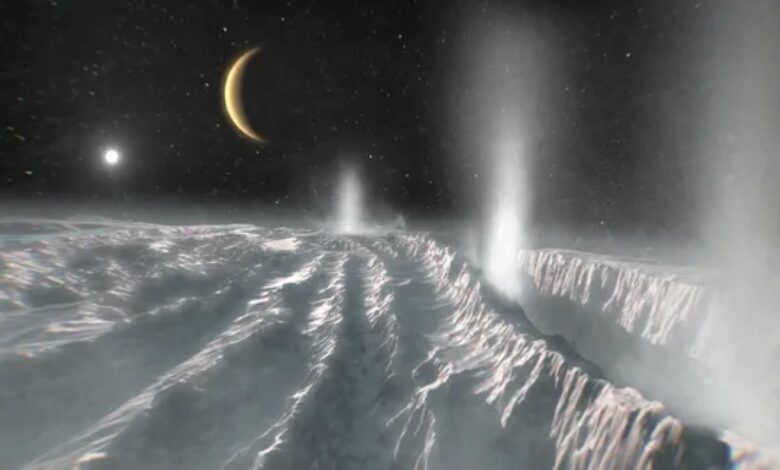This method could reveal whether icy moons of Saturn and Jupiter harbor life

Efforts to uncover life on icy moons in our solar system have been boosted by advances in chemical modeling, according to recent reports. These models are being refined to better assess whether environments such as Saturn’s moon, Enceladus or Jupiter’s moon Europa could support microbial life. Researchers want to simulate the extreme conditions on these celestial bodies to determine their potential habitability.
As explained in the press release by Southwest Research Institute, Charity Phillips-Lander, Senior Research Scientist at Southwest Research Institute (SwRI), has emphasized the importance of accounting for organic compounds in such studies. Existing geochemical modeling tools often lack the ability to integrate organics under the unique conditions of icy ocean worlds. Speak Speaking to Space.com, Phillips-Lander stated that the issue of habitability is about limiting the environmental factors that make life more likely to be friendly rather than inhospitable.
Phillips-Lander and colleague Florent Bocher have developed custom software to simulate the formation and behavior of organically doped ice pores: microscopic structures formed under freezing and thawing conditions.
These phenomena, observed in laboratory analogs, are used to mimic the environments found on moons like Enceladus. The software’s ability to predict the interactions of organic compounds with ice under extreme temperatures and pressures provides important insights into potential microbial habitats.
According to the report, the team is focusing on refining the instrument to accurately model the chemical processes that occur in subsurface oceans beneath thick ice crusts. Enceladus is of particular interest because of its suspected watery environment and active plumes, which could indicate the presence of organic molecules.
Implications for future missions
The researchers indicated that the refined models could serve as very important tools for interpreting data from future missions targeting icy moons. Phillips-Lander explained that the project aims to fill gaps in current data sets, allowing for more accurate laboratory simulations and aiding in the identification of potential biosignatures.
Reports suggest that these efforts are expected to contribute significantly to understanding the habitability of icy worlds and support continued explorations of potential extraterrestrial life.




